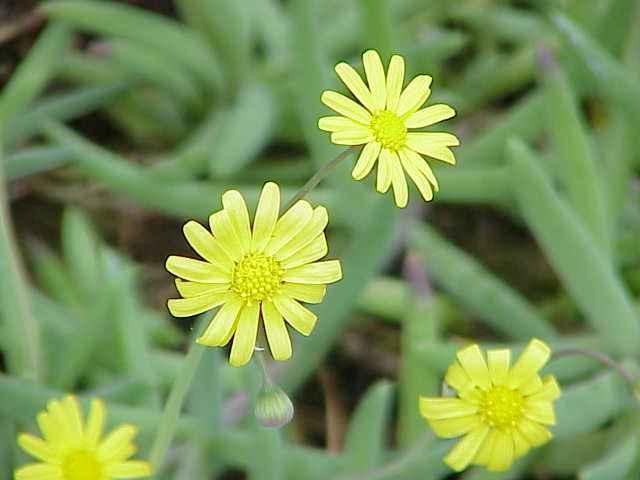Othonna Little Pickles – Tips On Caring For Othonna Ice Plants

There are so many types of succulents with varying shapes that it can be difficult to decide which to include in the landscape. One little beauty that makes an excellent groundcover is called Othonna ‘Little Pickles.’ Read on to find out about growing ‘Little Pickles’ and Othonna plant care.
About Othonna ‘Little Pickles’
Othonna capensis is a fairly slow-growing evergreen succulent. ‘Little Pickles’ is so named for its one-inch (2.5 cm.), pudgy, blue-green leaves that do, indeed, resemble tiny pickles. Indigenous to the Drakensberg Mountains of South Africa, the plant grows in low-growing clumps of about 4 inches (10 cm.) in height and a foot (30.5 cm.) across. Yellow, daisy-like blooms emerge and wave cheerily an inch (2.5 cm.) or so from above the foliage. The name Drakensberg means ‘dragon mountain’ in Afrikaans, and the Zulu people refer to the plant as ukhahlamba, meaning ‘barrier of spears.’ This particular succulent was introduced by Panayoti Kelaidis of the Denver Botanic Garden. Othonna is sometimes referred to as ‘Little Pickles Ice Plant’ and while it does bear some resemblance to Delosperma (hardy ice plant) and is of the same family, Asteraceae, the two are not the same plants. Still, ‘Little Pickles Ice Plant’ or ‘Othonna Ice Plant’ will likely be how the plant is listed.
Caring for Othonna Ice Plants
Othonna makes an excellent ground cover and also thrives in rock gardens or even containers. Once established, ‘Little Pickles’ is fairly drought tolerant. It is suited to USDA zones 6 to 9 and, in some cases, even into zone 5. Blooming in mid-spring through the fall, Othonna should be planted in full sun in well-draining soil. It does not like wet feet, particularly during winter months, so good drainage is crucial. Other than a distaste for soggy roots, caring for Othonna ice plants is nominal. As said, once established, it is drought tolerant. In warmer southern zones Othonna can be aggressive, so a barrier of some sort should be placed around the plants unless you want it to take over an area in the garden. If your Othonna is looking peaked, you can fertilize with low nitrogen fertilizer one or two times during the growing season; otherwise, there is no need for any specific Othonna plant care. ‘Little Pickles’ seeds are sterile, so propagation is accomplished by spreading leaves atop the soil. New plants should be well established after five to six weeks.
Sign up for the Gardening Know How newsletter today and receive a free copy of our e-book "How to Grow Delicious Tomatoes".

Amy Grant has been gardening for 30 years and writing for 15. A professional chef and caterer, Amy's area of expertise is culinary gardening.
